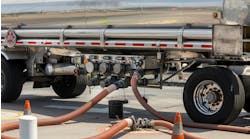Selecting the proper personal protection equipment (PPE) to fit the job requirement should be top priority before making a purchasing decision, said Dan Bowen of DuPont at the National Tank Truck Carriers Tank Cleaning and Environmental Council Seminar in Savannah, Georgia, March 30-31.
“PPE is not a suit of armor,” Bowen said. “It's the last line of defense, not the first.”
He suggested making an effort to understand what chemicals are involved in the workplace, including how often a worker will be exposed and at what chemical concentration, how dangerous is the chemical, and how will temperatures influence chemical changes. Even if workers know chemical names, they may not know the risks associated with the products — and some chemicals are identified by trade names that may not define the product.
Hazmat solids are generally inhalation risks and typically don't require a full suit. Hazardous liquids, on the other hand, can be dangerous when coming in contact with the skin. Some produce vapors that can be inhaled.
At the same time, when selecting PPE clothing, managers should remember that materials made with one chemical product may cause a reaction when exposed to a different chemical, Bowen said.
DuPont has software available that can be used for determining which PPE fabrics are needed for exposure to various chemicals, Bowen noted.
He pointed out that tank wash workplace practices should be in place to minimize all hazards, but when selecting PPE, managers should think about the categories of fabrics and clothing design that provide protection for various situations.
For example, high-density polyethylene Tyvek made by DuPont is designed for a broad range of applications and is best used for protection against small hazardous particles. It is water resistant, but not waterproof. Oil will penetrate the fabric, and it is not designed for use with hazardous liquids.
Other products are designed to be used with auxiliary equipment, such has hoods patterned for use with respirators.
Some clothing materials are thicker and some are more comfortable to wear than others. “In dealing with a hazmat material, the worker is going to be a little uncomfortable in order to be properly protected,” he said.
PPE clothing also can be more expensive based on the quality of the fabric and its construction. For example, clothing that has seams with exceptional seal protection can be more costly.
Both the Occupational Safety and Health Administration (OSHA) and the Environmental Protection Agency (EPA) provide PPE design designations, he noted.







